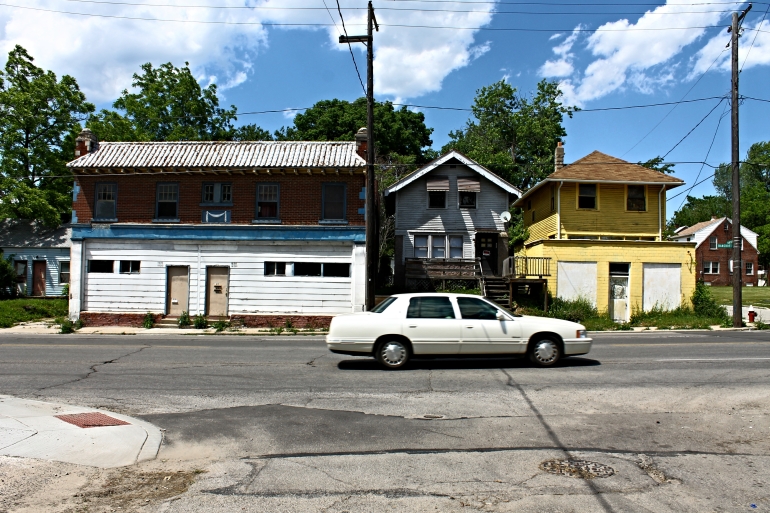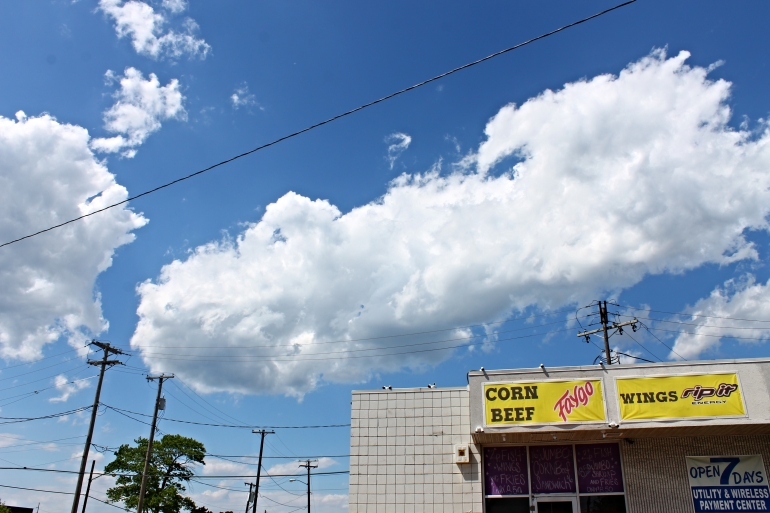One summer morning in Toledo, Ohio, we loaded the children into the station wagon and took them to Schmuckers, a family restaurant on Reynolds road that has been around since 1947.
Schmuckers is known for its homemade pies. The seasonal special that day was strawberry. The meatloaf and mashed potatoes I ordered were drowned in brown gravy. Both were delicious.
The place smelled old. The people – some tired looking, others severely overweight – quietly minded to themselves. A few made silly faces and smiled at our children.
The time-capsule quality of the restaurant was pleasantly distracting, with its linoleum tabletops, plaid curtains, and 1950s exterior. There was a quaintness to the place, and an appreciation of all things old and worn, and of history itself.

The owners have said their “ability to stay connected to the past has been key to Schmucker’s long success.” But elsewhere in Toledo, what is old is not always appealing.
Later that day, I took Bancroft street over to my alma mater, the University of Toledo. Around the edges of this 144 year old institution that started as a private arts and trades school, the city attempts to revitalize with commercial development, restaurants and shopping that will appeal to the nearly 21,000 students in attendance at the school.
The development is notable. But, like other parts of Toledo where prosperity sits on top of inequality (I wrote about this in November), the campus area sits between the elite residential communities of Indian Hills and Ottawa Hills on one side, and leads into the dilapidated and decaying eastern and downtown portions of Toledo on another periphery.
A quick drive under an overpass takes you there.

Abandoned homes, shuttered storefronts, nightclubs of another era – all of them tear apart the American notion of the hospitable and hardworking midwesterner.
Unfortunately, the crumbling infrastructure and inequality are not isolated to Toledo. The increase in populist rhetoric about inequality during the current presidential election campaign testifies to that.
In his recent essay “American Political Decay or Renewal,” the American academic Francis Fukuyama says:
“The real story of this election is that after several decades, American democracy is finally responding to the rise of inequality and the economic stagnation experienced by most of the population. Social class is now back at the heart of American politics, trumping other cleavages—race, ethnicity, gender, sexual orientation, geography—that had dominated discussion in recent elections.
The gap between the fortunes of elites and those of the rest of the public has been growing for two generations, but only now is it coming to dominate national politics.”
Ohio, an established battleground state for the election, is perhaps ground zero for what Fukuyama talks about.
The photographs in this essay are of buildings, not people. I wanted to capture a sense of abandonment and emptiness that gives some context to what we hear – often sensationally – from our politicians about people we never see.







Read More
The Robert Frank Collection – The National Gallery of Art
“American Political Decay or Renewal? The Meaning of the 2016 Election” – Francis Fukuyama
“Will Britain’s American Children Follow the Mother Country’s Populism?” – The Huffington Post


